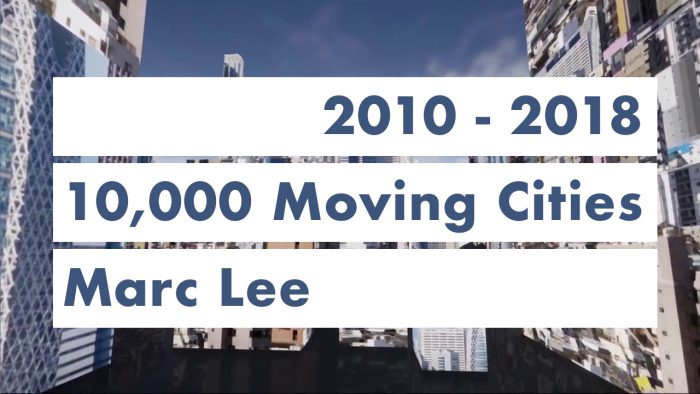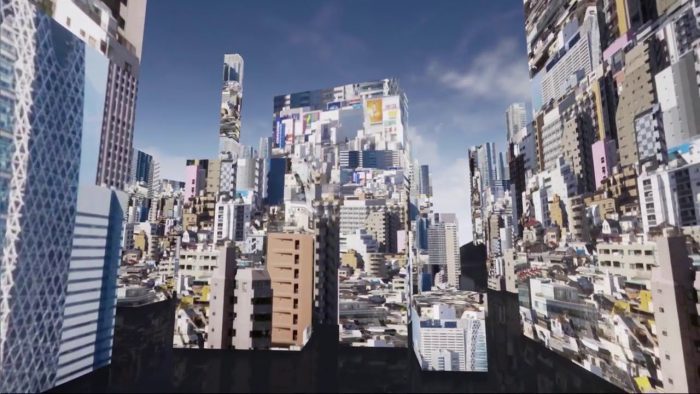
The Artist
The artist in focus is Marc Lee. He is a Swiss media artist who has created various interactive art projects, installations and performance art for almost 20 years, which is displayed all over the world. His artworks are very daring which would normally showcase cultural, political and social meanings in them.
His works have been exhibited in museums all over the world, such as the National Museum of Modern and Contemporary Art in Seoul, South Korea, New Museum in New York and the Intercommunications Center in Tokyo, Japan.
Marc Lee also does lectures and teach in workshops about art and interactive art around the world such Shanghai Institute of Visual Art and China Academy of Art in Huangzhou.
The Artwork
The chosen artwork by Marc Lee is 10,000 Moving Cities. It is an interactive net-based installation. There is the Virtual Reality version which has a telepresence-based element added to it, and also an Augmented Reality version which has an accompanying app that would be used and plays a part in the interactivity of the installation.

Interface selection where users get to select a city or a location that they would want to see displayed
Before the installation could begin or before the user could interact with the installation, the user would have to select a location or a city from an interface by searching or selecting a blue or red pin on the interface. After the city or location is selected, images, sounds, texts and videos would be searched on the internet. These sound would then be displayed or projected at the location of where the user is at. The images, videos and content displayed on the installation itself or displayed through the app or devices, depending on whether you are viewing the installation through Augmented Reality or Virtual Reality. Every time a city is selected, a new search will take place hence the experience will be different every time.
These two different platforms will be explained more below.
Virtual Reality (VR)
The version with the Virtual Reality, or VR, is viewed through devices that users use, namely high-tech goggles such as an HTC Vive or anything similar. This device will be located inside a space where sound could be projected and immersed by the user, and also an area where the user could actually move around without bumping into anything or anyone. As mentioned before, the user would select the location or city via the goggles. The visuals would then appear through the goggles and displayed on tall imaginary buildings. The user would then get to look up or down and move around the space to immerse themselves in the installation.
Below is a video to see how the HTC Vive is used and how the installation works for Virtual Reality.
Augmented Reality (AR)
Then there is the Augmented Reality version that makes use of a mobile app to view the displayed visuals. In real life, there will only be an empty space, but when viewed through an app on a smartphone or a tablet, the user gets to see imaginary buildings appearing right in front of them and throughout the space. The user would also get to carry around the device with the app and walk through and amongst these imaginary buildings to view them closer and in greater detail. What is displayed on these imaginary buildings are similar to the one displayed in the Virtual Reality version, but again, the images and the sounds played are not the same and will vary for everyone.
Below is a video that would help to show how the app and the Augmented Reality works in the installation.
Offline version
There is also an offline version where the installation does not use any apps or devices. The basic set up for the installation are real physical white cubes of varying heights spaced on in a space. Similarly, the user still selects a city or a location on an interface, but instead of appearing through goggles or mobile devices, the images will be projected on the white cubes. These cubes would then represent the different buildings that make up the city skyline. The user would then be allowed to walk through and amongst these cubes with projected images and videos as if they are walking through the city that they have selected. Sounds would also be played in the location to add to the immersive experience.
The offline version of the installation is shown in the video below.
Entropy
For this installation, entropy – the lack of order and predictability – is seen here as the images projected on the cubes or displayed in the VR are all in a way randomized to that moment and for different people. The users in a way also would not know what would be displayed or what would appear. Even if they have a rough idea on what would appear, they can’t exactly decide on what the images will be and it will always be different for different people. Also, as mentioned earlier, every time a city is selected, a new search will take place and new images, sounds, texts, and videos will appear, creating a different and an unpredictable experience every time, hence, entropy.
Immersion
This installation is definitely an immersive type of installation where the users get to use their many senses to engage and interact with the installation. The user gets to see the images projected through the app, the goggles or the cubes. They get to hear the sounds played in the area that adds on the to the immersive experience. They also get to walk around the space with the goggles, the mobile device or even walk among and in between the cubes with displayed images.
Conclusion
In conclusion, 10,000 Moving Cities is an immersive installation by Marc Lee where users get to experience the ever-changing cityscape. The content of the installation is different every time so there is a sense of entropy for the users. He also allowed users to experience this through Augmented Reality, Virtual Reality or even an offline mode where users get to walk about a physical space without any devices on. With this, he has allowed users to experience the installation with different platforms, with each of this platform similar to each other, so that the experience is similarly immersive yet different in content.
References
Lee, M. (1970, January 01). 10.000 Moving Cities – Same but Different by artist Marc Lee. Retrieved from http://marclee.io/en/10-000-moving-cities-same-but-different/

